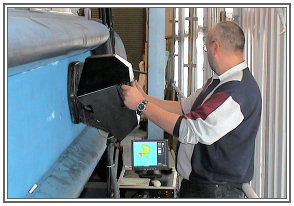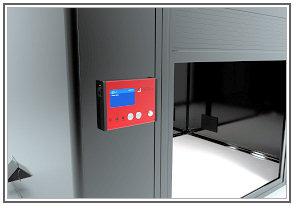The prominence of laser technology has grown across diverse sectors, including medicine, industry, research, and entertainment. However, the potential harm of laser radiation to human well-being has become evident. The mishandling of lasers can lead to injuries and property harm. Consequently, adhering to laser safety protocols and standards is imperative to safeguard both people and the environment. The British Standard BS EN 60825 stands as a pivotal guideline for laser safety. Thus, ensuring laser safety, employing interlock systems, using safety cabinets, and complying with BS EN 60825 have become paramount.
The Significance of Laser Safety
Laser radiation can inflict damage on human skin and eyes, resulting in temporary or permanent impairment. The extent of injury depends on factors like wavelength, power, and exposure duration. For example, high-power laser exposure can cause blindness, while lower-power instances can lead to skin burns. Beyond this, laser radiation can even ignite flammable materials, causing fires and explosions. Besides injury and property risk, laser radiation can disrupt electronic devices. Sensors, cameras, and other electronic components can be compromised by laser interference. Hence, guaranteeing safe laser usage is essential to avert accidents, injuries, and equipment damage.
Understanding British Standard BS EN 60825
BS EN 60825, a British Standard, offers comprehensive laser safety guidance. It encompasses various laser products, ranging from pointers to medical, industrial, and research laser equipment. This standard covers aspects such as hazard classification, labelling, and user training. The most recent version, BS EN 60825-1:2014, was published in 2014.
Hazard Classification within BS EN 60825
BS EN 60825 categorizes lasers into four hazard classes based on potential risks to human eyes and skin:
Class 1: Safe lasers emitting non-hazardous radiation below the maximum permissible exposure (MPE) limit.
Class 2: Low-risk lasers emitting visible radiation that poses no harm if exposure remains under 0.25 seconds, though prolonged exposure can damage eyes.
Class 3R: Moderate-risk lasers emitting visible radiation that can harm eyes if exposure is extended. They are also hazardous when optical instruments direct the beam into eyes.
Class 4: High-risk lasers emitting radiation capable of damaging eyes and skin, while also presenting a fire hazard. They demand specific precautions for safe usage.
Labelling
The standard mandates laser products to carry specific information on labels, including hazard class, maximum output power, and wavelength. Labels must also feature warning symbols and instructions for safe handling and use. These labels must be visible, easily readable, and affixed to the laser product or packaging.
Laser Safety Training
The standard necessitates proper training in laser safety and handling for users. This education should cover hazards of laser radiation, secure operating procedures, and emergency responses. Training should address the specific hazards tied to the utilized laser product. Documentation and periodic reviews of the training are recommended.
Interlock Systems
Interlock systems are pivotal in ensuring laser safety. They prevent laser operation when specific safety conditions are unmet. These systems can be mechanical or electrical and integrated into laser products or control systems.
Mechanical interlocks employ physical barriers (doors, covers) to bar access to the laser beam. For instance, a laser safety cabinet might halt laser operation if its door is open. This confines the laser within the cabinet, averting risks.
Electrical interlocks rely on sensors and switches to detect hazards, halting laser operation when such risks are present. For instance, an electrical interlock may identify misalignment or faulty cooling. If these conditions persist, the interlock prevents laser use.
Interlock systems are pivotal for high-power laser systems, fortifying safety against accidents and injuries. They can be tailored for specific applications and safety prerequisites, often necessitating multiple systems.
Laser Safety Cabinets
Laser safety cabinets offer secure environments for laser systems. These enclosures prevent laser radiation from escaping, proving crucial for high-power or high-risk laser systems.
Crafted from laser-resistant materials like metal or plastic, cabinets often contain laser-absorbing linings to minimize radiation reflection. Interlock-equipped doors thwart laser operation if open.
Laser safety cabinets provide controlled environments, often featuring ventilation for heat removal and prevention of hazardous gas buildup. Fire suppression systems further enhance protection.
These cabinets are pivotal for high-risk laser systems, providing controlled surroundings for laser operation while containing radiation. This approach ensures both effective laser use and safety.
The Mats DirectoryLider Press Directory
SeekWebsites DIRECTORY
businesses
MCBN.org
Abiz Directory



